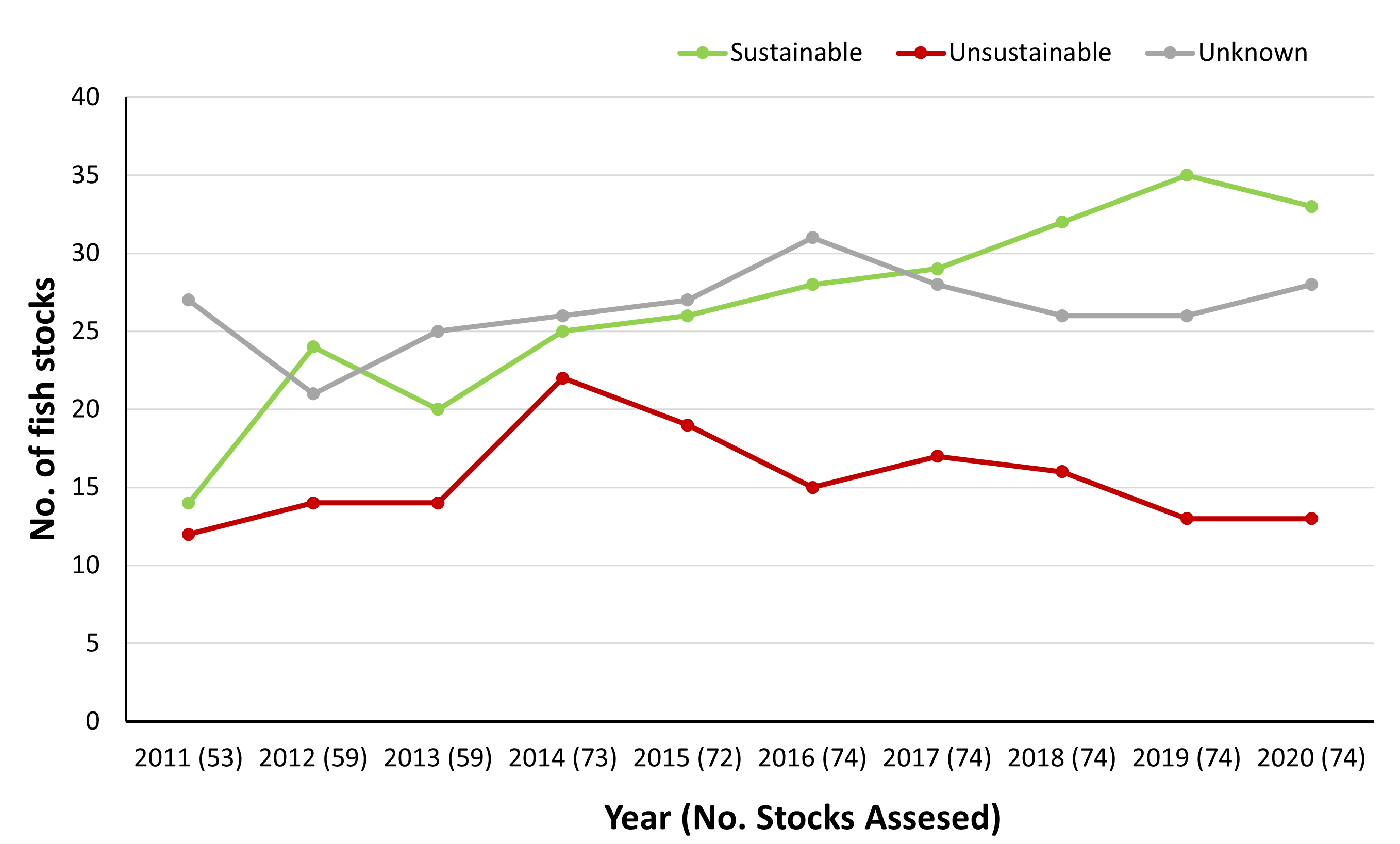| Current status | 2022 |  |
| Short term status | 2019 - 2022 |  |
| Long term status | 2011 - 2022 |  |
Click on the charts below in order to see the full resolution versions.
Fish stock data are derived from The Stock Book, an annual assessment produced by the Marine Institute’s Fisheries Ecosystems Advisory Services (FEAS) and provides up to date scientific information on the state of the fisheries resources exploited by the Irish fleet. The majority of the scientific advice presented in the Stock Book is formulated by the International Council for the Exploration of the Seas (ICES). Scientific advice from the Scientific, Technical and Economic Committee for Fisheries (STECF) and the International Commission for the Conservation of Atlantic Tunas (ICATT) is also used.
Overfishing does not necessarily mean that a fish stock is at risk of extinction or collapse – it simply means that more could be caught with less fishing activity. This means only taking fish that are the right size thereby letting fish grow and reproduce at their most productive level. Under these conditions the long-term catches from fish stocks will be at their maximum sustainable yield (MSY) i.e., the largest long-term average catch that can theoretically be taken from a species’ stock. Fishing too hard means that fish will be caught too soon, too small or using too much effort. The European Union and Member States have committed themselves to reach the objectives of fishing at MSY by 2015 where possible, or 2020 at the latest.
The other metric used to assess the state of commercial fish stocks is an estimate of the stock population capable of reproducing, termed the spawning stock biomass (SSB). The indicator is based on whether stocks’ SSB is within the range of biomasses that can sustain MSY; the critical threshold being the BMSY trigger. The key metric is the ratio of SSB/BMSY trigger whereby sustainably fished stocks have SSB/BMSY trigger > 1. The data presented in the graph are the number of stocks in Irish waters being fished sustainably, unsustainably and of unknown status. In 2022, the number of fish stocks in Irish waters that were fished sustainably (as a percentage of the number of stocks being fished that year) was 53% (40 out of 75 stocks). This is a 27 percentage point increase on 2011 figures, with only 14 out of 53 fish stocks being fished sustainably (26%) that year. The number of stocks that were fished unsustainably remained similar between 2011 and 2022 (1 percentage point decrease). The number of fish stocks with an unknown status also decreased from 51% in 2011 to 25% in 2022.
Access to the Stock Books produced annually by the Marine Institute’s FEAS can be found here:

